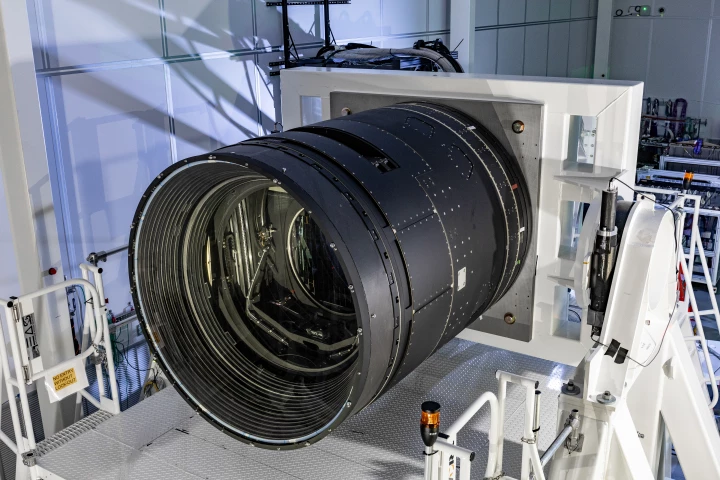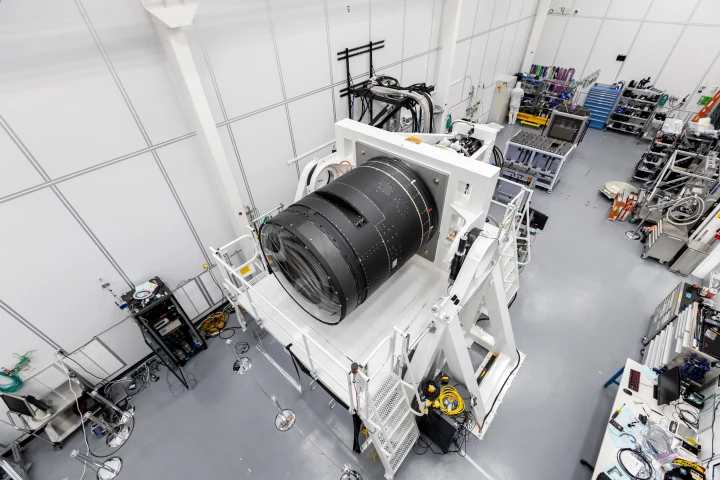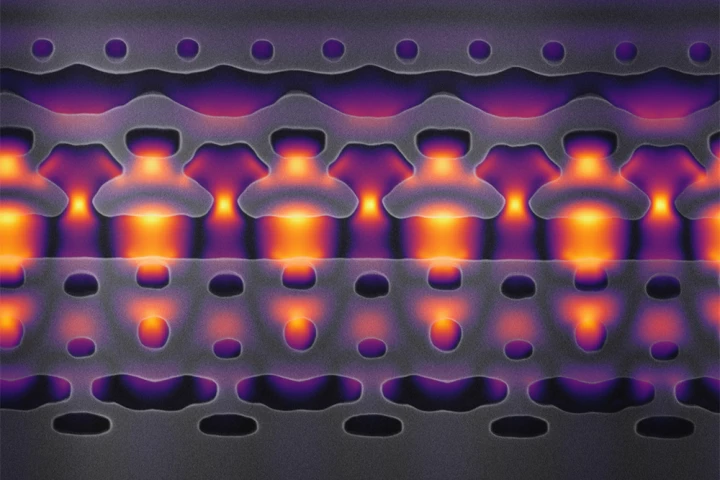SLAC
-
After decades of planning and building, the world's largest digital camera at the heart of the Vera C. Rubin Observatory on the summit of Cerro Pachón in Chile has snapped its first imagery – from test observations spanning a 10-hour window.
-
The SLAC National Accelerator Laboratory has announced the completion of the LSST Camera, which is capable of capturing 3,200-MP images, and will now be installed on a telescope in Chile to help unravel some of the biggest mysteries in the universe.
-
Researchers have combined two microscopic imaging techniques in one microscope, providing scientists with a high-resolution method of tracking single molecules in a cellular context, letting them visualize, in minute detail, what’s happening inside cells.
-
The SLAC National Accelerator Laboratory has switched on the world's most powerful X-ray laser. The Linac Coherent Light Source II X-ray Free-Electron Laser (XFEL) flashes a million times a minute and is 10,000 times brighter than its predecessor.
-
Scientists at Stanford University have cooked up a new electrolyte recipe that tackles battery flammability in a highly promising way, leaning on extra salt content to circumvent problematic chemical reactions.
-
The world’s most powerful X-ray laser is ready for operation after a massive overhaul. The upgraded LCLS-II uses temperatures colder than deep space to accelerate electrons to near light-speed and fire off a million X-ray bursts per second.
-
Although it should be extremely common in the universe, dark matter has proven tricky to detect. Now researchers have proposed an intriguing new method to spot it – looking for shock waves as dark matter “asteroids” collide with stars.
-
Scientists may be able to detect the presence of dark matter by searching for anomalous heat signatures from distant alien worlds. Dark matter is an enigmatic, invisible substance that is thought to make up around 80 percent of the universe’s mass.
-
Battery researchers are continually experimenting with alternative materials in an effort to boost performance, and a group from Stanford University and SLAC National Accelerator Laboratory is claiming to have landed on a winner.
-
The focal plane for what will be the world’s largest digital camera has been used to snap the first ever 3,200-megapixel images, with the team now preparing to install this sensor array into a next-generation telescope to study the universe.
-
The Linac Coherent Light Source (LCLS) is an extremely powerful X-ray laser – and now it's about to get even more powerful. The second generation of the instrument has now achieved first light, with scientists demonstrating fine control of the beam.
-
Particle accelerators could be incredibly useful for medicine – if they weren’t so huge. Now, scientists at Stanford have managed to shrink the tech down to fit on a computer chip, which could lead to more precise cancer radiation therapies.
Load More











